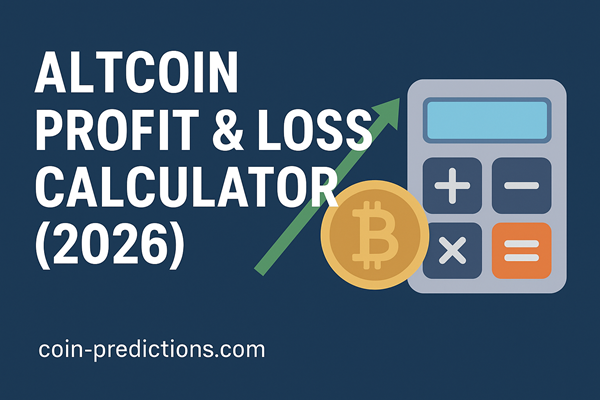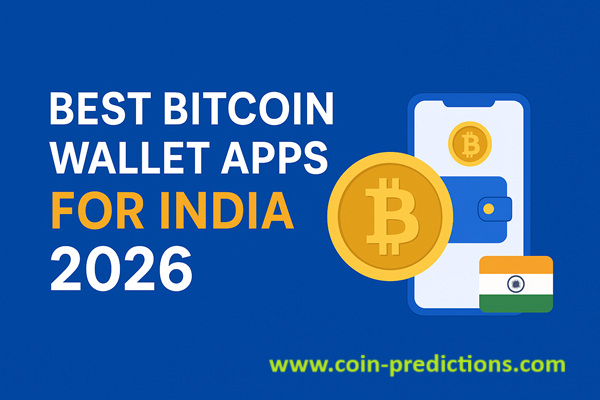crypto predictions (What One’s Should Do Now)

10 Crypto Predictions for the Next 5 Years (And What You Should Do Now)
You might think the world of crypto is unpredictable. And you’d be right—there’s no crystal ball. But if you dig into the market signals, underlying technology, and macro trends, you can make educated predictions.
In this post I’ll walk you through 10 key crypto predictions for the next 5 years — what they mean, why they matter, and what you can do today to get ahead.
Why these predictions matter
You see, with crypto the stakes are huge: big upside, big risk. If you’re in the game (or thinking of getting in), you don’t just want shallow commentary—you want actionable insights. That’s the style I follow here.
Prediction 1: Crypto will go more mainstream — not just speculation
What I mean
In the next 5 years, crypto will move from being primarily a speculative asset class to being embedded in everyday finance and commerce.
We’re already seeing this: more companies accepting crypto payments, more DeFi (decentralised finance) products being launched, more institutional involvement.
But the shift I predict is deeper: crypto becomes integrated into banking rails, loyalty systems, real-world assets, even everyday retail.
Why it matters
When crypto is not just “betting on the coin” but “using the coin”, the value proposition changes. That tends to attract more stability, more regulation, more capital — and thus larger growth potential.
Also: for you that means less of the high-volatility gamble, more of “this is part of the infrastructure”.
What you can do now
- If you hold crypto assets, evaluate whether your holdings are purely speculative (hoping price goes up) or whether there’s a use case (e.g., staking, payments, access).
- Consider projects that aim to build real-world utility, not just hype.
- Monitor partnerships between crypto projects and large companies—those tend to precede mainstream adoption.
Prediction 2: Regulation becomes clearer — and that drives confidence
What I mean
Many jurisdictions are still figuring out how to regulate crypto: Are tokens securities? How are exchanges regulated? What about stablecoins?
I predict a wave of regulation clarity over the next 5 years. Clear rules will force some weaker projects to fold — but will give stronger projects legitimacy.
Why it matters
Regulation often scares people, but in this case it can be good. When the rules are clear, institutional money flows in, consumer confidence increases, and the overall ecosystem grows.
Conversely, if regulation doesn’t keep up, you’ll see stasis, or bubbles popping.
What you can do now
- Keep tabs on regulation in your country (in India: what’s happening with RBI, SEBI, etc.).
- Prefer crypto projects whose governance and legal structure show that they’re ready for regulation.
- Don’t assume “no regulation = freedom” — regulatory clarity often equals long-term value.
Prediction 3: Institutional investors will dominate the next wave
What I mean
Over the last few years, retail investors have dominated crypto hype cycles. But I foresee the next wave being driven by institutions: hedge funds, pension funds, traditional banks.
They’ll allocate meaningful percentages of their portfolios to crypto and related assets.
Why it matters
Institutionals bring large capital pools, but they also bring due-diligence, compliance requirements, long-term horizons. The effect? Less wild volatility (maybe), more maturity in the market.
For you, that can both reduce extreme upside and reduce extreme downside.
What you can do now
- Look for “institutionally friendly” crypto offerings: custody, audit, transparency.
- Stay aware of announcements: large funds entering crypto often create momentum.
- Adjust your risk: if you were expecting wild “get-rich-quick”, note that the game might shift to “steady growth”.
Prediction 4: Layer-2 and scaling solutions will explode
What I mean
One of the biggest bottlenecks for crypto adoption: scalability. Network congestion, high fees, slow settlement.
In the next 5 years: expect many more Layer-2 solutions (on top of main blockchains) and alternative chains optimized for particular uses.
Why it matters
Better scalability = better user experience = more mainstream use. If you can’t send crypto without huge fees or wait times, adoption slows. When that changes, the whole dynamic changes.
Projects that solve scaling well or sit in the “infrastructure layer” of scaling will likely benefit enormously.
What you can do now
- Identify projects working on scaling: e.g., side-chains, rollups, state channels.
- Consider whether your holdings might be exposed to scaling risk (i.e., if they’re stuck on slow networks).
- Stay updated on network upgrades—major upgrades often trigger price moves.
Prediction 5: Real-world assets (RWAs) tokenisation will become mainstream
What I mean
Tokenisation = taking real-world assets (real estate, equity, art, commodities) and representing them on a blockchain.
In 5 years, expect this to become a major use case — not just a buzzword.
Why it matters
Tokenisation opens up huge value: fractional ownership, global access, new liquidity. If real-world assets flow through crypto rails, the market size expands massively.
Your crypto portfolio might no longer just be coins/tokens—could include tokenised real-estate shares, fine art tokens, etc.
What you can do now
- Monitor projects working on asset tokenisation.
- Consider diversification: crypto doesn’t only mean Bitcoin or Ether—it could mean “tokenised farm” or “tokenised building”.
- But: be wary of hype. Tokenisation is powerful but still nascent — choose projects with credible partnerships and regulatory clarity.
Prediction 6: Stablecoins and CBDCs (Central-Bank Digital Currencies) change the game
What I mean
Stablecoins are already big (USDT, USDC). CBDCs are being explored/rolled by many countries.
In the next few years: we’ll see more regulatory-approved stablecoins, stronger interoperability, and some CBDCs in mainstream use.
Why it matters
These create the bridge between “traditional” finance and crypto. When you can move value across borders instantly, cheaply, and securely—crypto’s use case grows.
Stablecoins + CBDCs = easier entry for non-crypto natives. That’s big.
What you can do now
- Hold some exposure to stablecoin ecosystems (not just volatile coins), especially if you’re risk-averse.
- Watch CBDC announcements in your region (India, Southeast Asia, Africa).
- If you’re a project builder: consider how your product works in a world of CBDCs + stablecoins.
Prediction 7: Privacy and regulation will battle — and privacy-focused crypto will rise
What I mean
As regulation grows (prediction #2), tension will increase between privacy desires and regulatory compliance. Crypto projects with strong privacy features may gain traction (but also face regulatory scrutiny).
Why it matters
Privacy-focused cryptos aren’t for everyone—but for some users, the value is large. If regulation tightens, people may seek alternative networks or coins that emphasise anonymity.
Balance will be key: mainstream adoption may prefer hybrid privacy (selective disclosure) rather than full anonymity.
What you can do now
- If you value privacy, keep an eye on coins and networks specialising in confidentiality.
- If you’re more mainstream, look for projects that advertise “privacy but regulatory-compliant”.
- Monitor legal/regulatory changes: sometimes these significantly affect privacy-coins.
Prediction 8: Tokenomics and utility become far more important than hype
What I mean
In earlier years, many crypto projects succeeded on hype and marketing. In the next 5 years: projects will be judged harshly on their tokenomics (supply, demand, inflation, utility) and real utility (what the token does).
Why it matters
If you’re invested in a coin simply because it’s “hot”, you may find yourself holding something with no real value. Projects that have strong fundamentals will separate from those that don’t.
For you: this means being more selective. It’s no longer “all coins go up eventually” (if it ever was).
What you can do now
- For each token you hold, ask: What utility does this token provide? How is supply managed? Is there sustainable demand?
- Read token-omics whitepapers (or summaries).
- Prefer tokens where the ecosystem depends on demand for the token (not just speculation on the token).
Prediction 9: More mergers, acquisitions and consolidation in the crypto space
What I mean
As the market matures, many smaller or weaker crypto projects will either merge with stronger ones or be acquired. Some exchanges will consolidate. Some networks will merge.
Expect the “wild west” of 2020-2022 to give way to more professional, consolidated players by ~2028.
Why it matters
Consolidation often means fewer but stronger players, more brand trust, possibly less innovation—but more stability.
For you: that means the “wild gamble” may shift to “which of the big players ends up dominating” rather than “which tiny coin goes 100× overnight”.
What you can do now
- Watch for M&A announcements in the crypto space.
- If you’re invested in smaller projects, evaluate the merger/acquisition timeline and risk.
- Consider hedging: holding a mix of “established” + “emerging” projects.
Prediction 10: Education, user-experience and onboarding become critical
What I mean
Today, crypto still has a fairly steep learning curve: wallets, private keys, gas fees, network choice.
In the next 5 years: most of that will get smoothed out. UX will improve, onboarding of non-tech users will be seamless, apps will abstract away complexity.
Why it matters
Mass adoption requires ease-of-use. The moment someone’s grandma can use crypto easily—that’s when growth enters a new phase.
From a marketing/SEO perspective: content around “how to crypto for beginners”, “how to use wallets”, etc will continue to be valuable.
What you can do now
- If you create content: focus on beginner-friendly tutorials.
- If you invest: favour networks/apps that prioritise user-experience.
- For all: keep learning. The easier it becomes for users, the more competition there will be—and you’ll want to be ahead of the curve.
How to position yourself for success
1. Stay diversified (but smart)
Don’t throw everything into one coin. But don’t spread so thin that none of your holdings matter. Pick a core of “established projects” + a shorter list of “emerging ones” with strong fundamentals (see Prediction 8).
2. Monitor regulatory shifts globally
Regulation in one country may impact the global market — especially big jurisdictions like the U.S., EU, China/India. Stay informed.
3. Keep learning & build systems
Because the crypto world changes fast. Set aside time weekly to read reputable crypto news, whitepapers, project updates. As Neil says: you need to think about your readers (or in this case: your future self) and stay ahead.
4. Focus on utility, not just price
Ask: What real problem does this project solve? How many users? What growth potential? Is the token central or peripheral to the project?
5. Use content & community to your advantage
If you’re building or influencing: create content that helps non-experts. Use simple words (Neil’s advice: write as if you’re writing for one person).
Conclusion
We’re at an inflection point in the crypto world. The next 5 years will likely shape not just price charts but structure, usability, regulation and adoption.
If you lean into the predictions above — mainstream integration, regulatory clarity, institutional money, scaling solutions, tokenised real-world assets, stablecoins & CBDCs, privacy trade-offs, strong tokenomics, consolidation, and user-friendly onboarding — you’ll be better positioned than someone who’s just “hoping the next coin goes 10×”.
Here’s the bottom line:
- Treat crypto like a technology + economy + culture shift — not just a trade.
- Focus on the foundations more than the hype.
- Prepare for the long game.
What are you most excited about in the next wave of crypto? Do you believe one of these predictions will dominate? Drop your thoughts below — I’d love to hear your viewpoint.
Thanks for reading — if you found value here, share this post and help others navigate the crypto future.
Read – Crypto Predictions 2025–2030: Top 10 Coins to Hold for the Long Term



